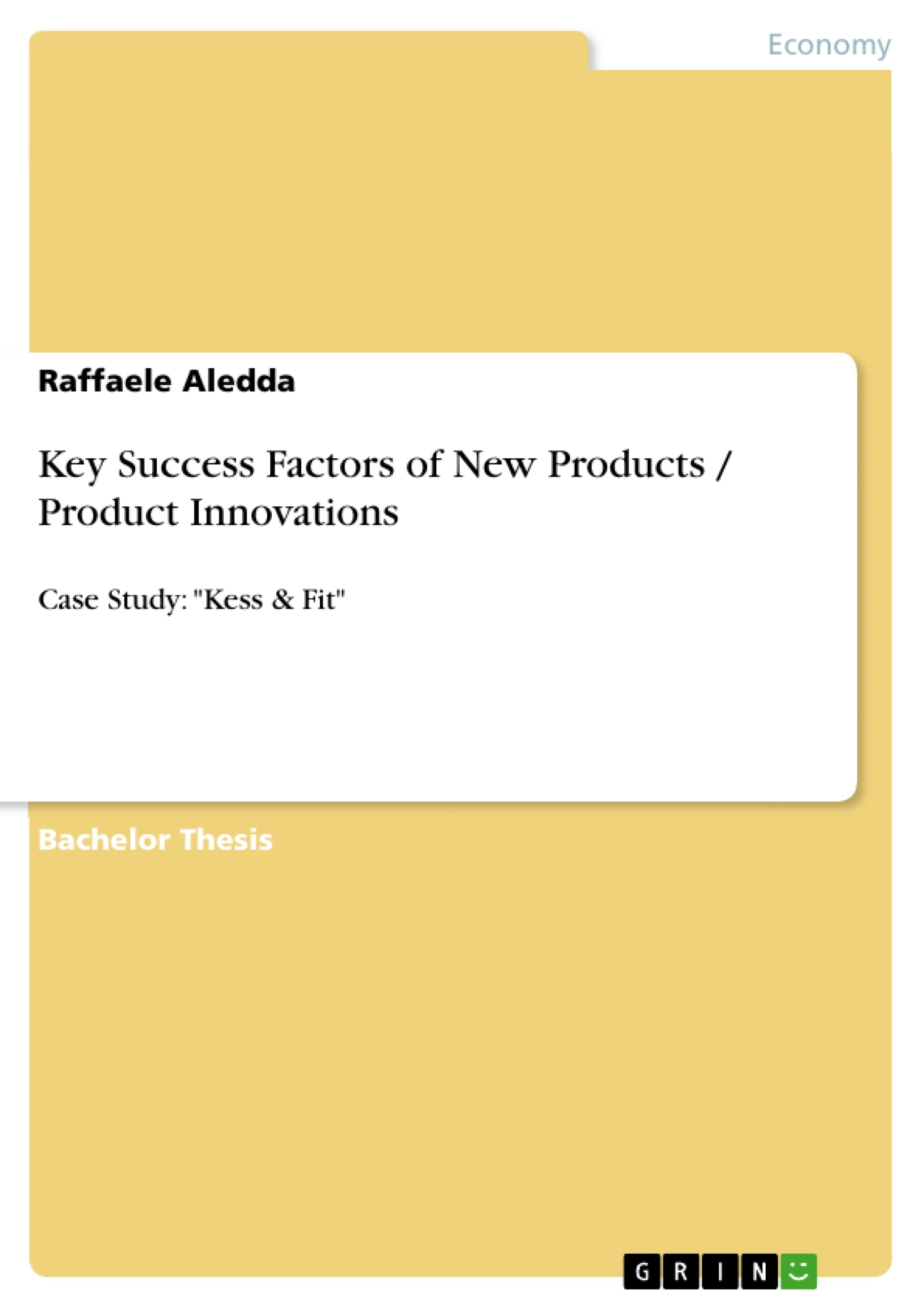The new information age has seen an impressive shift to global markets and cross-border competition, resulting in customers increased expectations for higher quality products, competitive prices and better and faster services. Hence, companies aiming at striving success are focussing more and more on generating fast, innovative, and efficient solutions to satisfy customers’ expectations and to create value for shareholder. In view of that, the quest for new products capable to bestow the company with the differential advantage to position itself against its competitors has never been more critical than ever before. However, although innovations are generally seen as the engine of growth, only a small number survive the first year and generate significant value for shareholders. Thus, managers all around the world are keen to identify key factors of success to reduce uncertainty in the new product development process. Yet, history teaches us that product innovation is a complex and dynamic process whose success is difficult to measure, to forecast and which call for talented managers capable to identify and harmonize an array of exogenous, endogenous and consumer perception factors of success simultaneously. Most notably, consumers perception is difficult to map and far more complex to manage. Only new products and innovations that timely offer superior and unique benefits that are perceived as such by customers are marketable and sustainable in the long run and thus generate value for shareholders.
Inhaltsverzeichnis (Table of Contents)
- Introduction
- The Purpose of the Study
- Structure of the Thesis
- Methodology
- Secondary Data
- The Case Study Method
- Research Limitations
- The Concept of Innovativeness
- Definitions of Innovation
- Berlyne's Theory of Collative Variables
- Newness Perception across Countries
- The Concept of Success Factors
- Definitions of Success
- Measurements of Success
- Methods for Determining Key Success Factors
- Key Success Factors
- Exogenous Key Success Factors
- Endogenous Key Success Factors
- Consumer Perception Variables
- The Model
- The Innovation Process
- The Idea Generation Process
- Adoption and Diffusion of Innovations
- Determining Key Success Factors of NP
- Case Study: "Kess & Fit" at Kessler & Comp. GmbH & Co KG
- Background
- Company Profile
- The Kess & Fit Product Line
- Situation Analysis
- Analysis of Key Success Factors
- Exogenous factors of success
- Market Structure
- Exogenous factors of success
- Background
Zielsetzung und Themenschwerpunkte (Objectives and Key Themes)
This Bachelor thesis examines the key success factors for new product innovations, focusing on the case study of "Kess & Fit" at Kessler & Comp. GmbH & Co KG. The study aims to understand how various factors, both internal and external to the company, influence the success of new product launches. It delves into the complexities of the innovation process, including idea generation, adoption, diffusion, and the critical role of consumer perception.
- Key Success Factors for New Product Innovations
- The Impact of Exogenous and Endogenous Factors on Product Success
- The Role of Consumer Perception in New Product Adoption
- The Importance of the Innovation Process for Sustainable Success
- Application of Key Success Factor Frameworks in a Real-World Case Study
Zusammenfassung der Kapitel (Chapter Summaries)
The first chapter introduces the purpose and structure of the study, outlining the methodology employed, including secondary data analysis, the case study approach, and the research limitations. Chapter 2 delves into the concept of innovativeness, exploring definitions of innovation, Berlyne's theory of collative variables, and the perception of newness across different countries. Chapter 3 focuses on the concept of success factors, defining success, exploring its measurement methods, and analyzing key success factors across exogenous, endogenous, and consumer perception variables. The fourth chapter examines the innovation process, focusing on the idea generation process, adoption and diffusion of innovations, and the identification of key success factors for new product innovations. Chapter 5 presents the case study of "Kess & Fit" at Kessler & Comp. GmbH & Co KG, providing background information about the company, product line, and situation analysis, before examining the key success factors specific to this case study.
Schlüsselwörter (Keywords)
Key terms and concepts in this thesis include new product innovations, key success factors, consumer perception, exogenous factors, endogenous factors, innovation process, idea generation, adoption, diffusion, case study, Kessler & Comp. GmbH & Co KG, "Kess & Fit," and market structure. The thesis analyzes the relationship between these concepts and their impact on the success of new product launches.
- Quote paper
- Raffaele Aledda (Author), 2007, Key Success Factors of New Products / Product Innovations, Munich, GRIN Verlag, https://www.grin.com/document/159652



